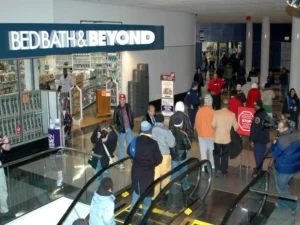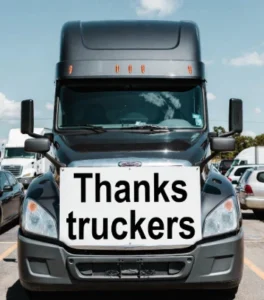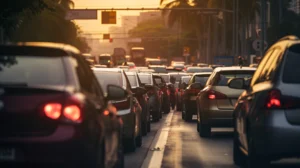The city of Los Angeles has been involved in a series of protests that will continue for several days; here's how to navigate them with due caution.
Since June 6, the city of Los Angeles has been engulfed in a series of protests following an increase in raids by the Immigration and Customs Enforcement (ICE) agency in the region. Protesters have announced their intention to continue demonstrations for several days, causing significant increases in traffic and blockages on various streets and highways, posing an additional risk to heavy truck drivers.
Los Angeles Mayor Karen Bass expressed on social media that her main priority is to ensure the safety of all citizens. Although the peak of the protests occurred on Sunday, June 8, when demonstrators blocked one of the main freeways, authorities still consider additional measures necessary in response to possible detours, closures, and traffic disruptions.

How to stay safe as a truck driver during the protests in Los Angeles?
The protests will not only continue in Los Angeles but are also expected to spread to other states that have announced their support for the cause, including New York. Therefore, for truck drivers traveling to or through these areas in the coming days, taking extra security precautions will be essential.
Based on a recent LandLine publication and supported by recommendations from OOIDA’s Director of Safety Operations, Doug Morris, we share some tips to face possible situations that could arise if truck drivers cannot alter their delivery routes or are caught unprepared:
- Know the alternative routes you can take during your trip. Have a plan ready if you expect to travel through areas that might be closed due to protests
- Stay informed about route closures. Our homepage offers daily updates on road conditions across the U.S. to facilitate your journey.
- If you must pass through a protest, keep your vehicle doors locked at all times.
- Follow company policies established for these types of incidents.
- Do not attempt to cross barricades or blocked zones.
- If stopped by authorities, clearly explain your destination and the reason for traveling through those areas.
- If your vehicle is equipped with surveillance cameras, make sure they are turned on.
- Do not respond to provocations or engage with protesters; your priority is safety and avoiding conflicts.
- Remain calm at all times.

Your safety will always be a priority. Although delays in deliveries or shipments cannot be completely avoided, follow these recommendations and stay alert to traffic updates to mostly avoid obstructed routes.

The strangest Black Friday purchases: from funny to nothing
Fueled by the adrenaline of the moment and the excitement of scoring big discounts, many shoppers have ended up buying unusual items during Black Friday.

Young drivers wanted, older drivers needed: the industry’s biggest dilemma
The road transportation industry remains at a crossroads in its efforts to recruit young drivers, but the workforce keeps aging and seeking retirement. The road

Thanksgiving, Black Friday and the Long Weekend: America Moves Because Trucks Never Stop
Thanksgiving, Black Friday and the Long Weekend: America Moves Because Trucks Never Stop

Thankful for the Drivers Who Keep America Moving This Thanksgiving
Thankful for the Drivers Who Keep America Moving: The Invisible Work Behind One of the Busiest Thanksgiving Seasons

Preparing for Thanksgiving travel: best and worst times to travel
Whether you are a truck driver, a traveler, or simply someone who needs to move around during these days, we share essential information to help

Cargo theft spikes during Thanksgiving: how to stay safe
Every year during Thanksgiving, cargo theft poses a serious threat to the trucking industry, and this year will be no exception. Every year during Thanksgiving,
